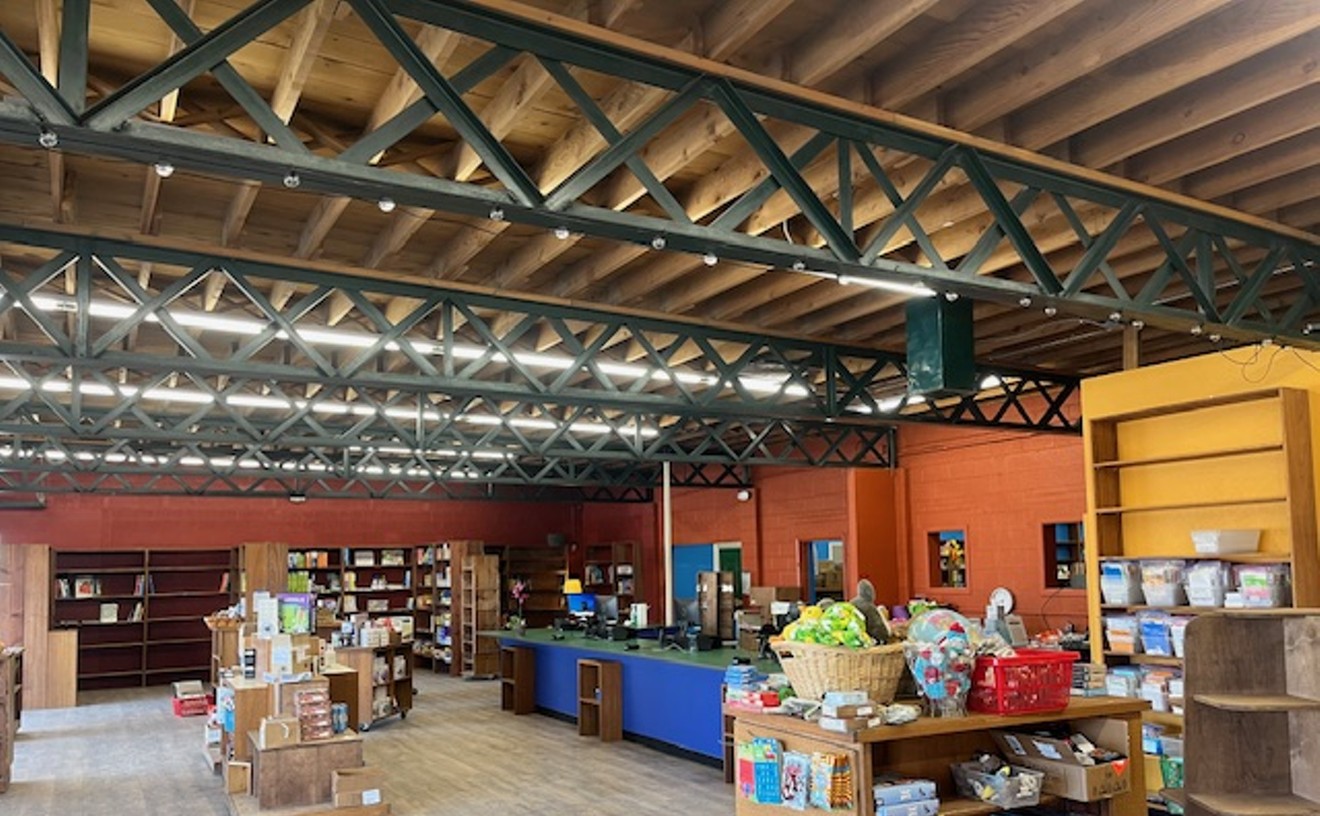All photos courtesy of the Denver Botanic Gardens.
But because of the fragile, organic nature of the works -- some twisted from green bamboo by Japanese artist Tetsunori Kawana and others built from dried bamboo by American sculptor Stephen Talasnik -- the pieces, like all plant materials, are now subject to the elements in their outdoor gallery. Together and apart, the works comprise a kind of yin and yang -- giving curves among flower beds and grasses versus more angular constructions planted in black water. "The two artists use very different methodologies, and we were playing with that also," explains DBG exhibitions director Lisa Eldred. "Both artists and teams made site visits multiple times to understand our space, but they work in different ways." "Kawana creates sketches and maquettes in advance, so the current installation marginally mirrors what he planned," she says. "Telasnik had begun a number of months ago, working in his studio in Brooklyn. Then he shipped and brought out the nucleus of his exhibition to be installed in the Monet pool." Representing a new look and feel for the DBG's annual installation, Kizuna --which refers in Japanese to the "bonds between people" -- sends an elegant, natural message that meshes well with new developments within the facility. "With every exhibition, we look to see contextually what else is going on at the gardens, and this year, it was the expansion of of the Japanese Garden and the new Bonsai Pavilion," Eldred says. "We thought about what we can do that's both relevant and different. We also wanted to do something contemporary, using artists working on site, which is something we have not done before, and something that transforms a space. This is more than us just bringing something in -- the audience could see it evolve over a couple of weeks, and these installations will change over time, in the Colorado sun and changing weather." What will happen to the sculptures after the show ends in November? "Kawana's work will be dismantled and the materials reused," Eldred notes. "And because Telasnik's pieces are modular, independent sculptures within an entire installation, we might be able to find homes for some of it. But both were meant to be designed for us. They won't exist in this way anywhere else."Life is fleeting; so is Kizuna. For information about the gardens and its entire season of events, indoor gallery shows and workshops tailored to Kizuna and Japanese culture, visit the Denver Botanic Gardens online or call 720-865-3500.
Find information on hundreds of other arts and entertainment events in our online Calendar.
To keep up with the Froyd's eye-view of arts and culture in Denver, "like" my fan page on Facebook.











